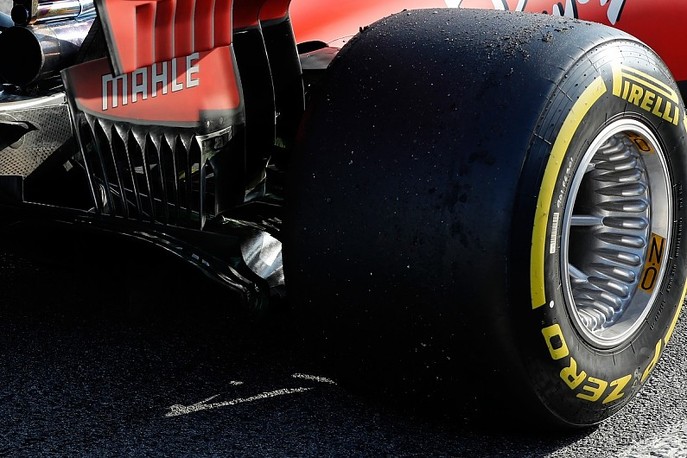Ferrari tries Mercedes-style wheel concept on 2019 car in F1 test

Ferrari has given a new wheel rim design its debut in Formula 1 testing at Barcelona, taking inspiration from the much-debated rear wheel assembly run by Mercedes last season.
The new solution was trialled on the second day of testing, and the new wheel rim features a number of raised sections in order to control temperatures within the wheel.
These draw heat away from the tyre, ensuring that the heat distribution within the rubber is kept relatively even - cutting down the level of thermal degradation at the rears.
Mercedes' scalloped rims first appeared in last year's Belgian Grand Prix, after the team had found multiple issues with its tyre management capabilities during the season.
They remained on the car throughout the rest of 2018, helping the team to six victories.

Following suit, Ferrari has tested with similar wheels to help bleed out some of the heat from the rear tyres in its own efforts to manage the level of wear and blistering experienced at high temperatures.
In comparison to the design run by Mercedes, Ferrari's features more raised sections to expand on the desired effect of heat management.
McLaren also launched with a similar wheel design last week, covered in black thermal paint to minimise the heat transfer to the tyres further.
It is unknown whether the wheels extend to the same extremes as Mercedes' arrangement from last season, which featured a wheel spacer to minimise the transfer of temperatures from the brake assembly.
The design also featured a number of small holes leading from the spacer to the rim, transferring air outboard to cool the wheel.
Wednesday morning aero testing
The third day of running kicked off with a number of teams using aero sensors to analyse their designs in the real world.
These are used to correlate data from the track to the data originally developed through windtunnel and CFD testing.
Mercedes and Red Bull used the 'bird cage' array of Pitot tubes - a common fixture in official practice sessions - to determine the flow field pressures around certain components.
This is to ensure that the airflow is behaving as predicted, and for teams to make changes to any simulations if there are any disparities.
Ferrari was monitoring pressure too, affixing large tower sensors to the rear wing as it looked at the areas immediately around that section of the car to determine the efficiency of the rear-end aerodynamics.
Toro Rosso also ran with a number of sensors, this time around the nose and front wing endplates, monitoring the amount of flex in the front wing to ensure that the aerodynamic components behave as expected.
Zdroj: autosport.com
Diskusia k článku
Najnovšie galérie
































 Freddy
Freddy 
 Kenneth
Kenneth 
 Hamed
Hamed  Ján
Ján 
 Gianluigi
Gianluigi 